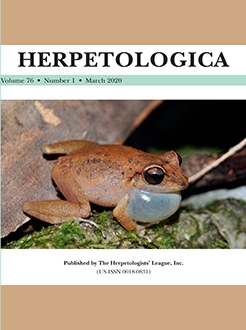Gape-limited predators, such as snakes, might rely on phenotypic plasticity to cope with variation in prey size, but experimental studies have found mixed evidence for plasticity in snake head morphology. Our study sought to determine whether variation in prey size and feeding rate induce head size plasticity in Northern Water Snakes (Nerodia sipedon). We avoided limitations of previous studies by growing all neonates to a consistent final size (400 mm snout–vent length [SVL]), and uncoupling feeding rate and prey size as potential factors influencing head size through four feeding treatments: big–fast (one large prey item every week), big–slow (one large prey item every other week), small–fast (two small prey items every week), and small–slow (one small prey item every week). Snakes in fast treatments grew faster than snakes in slow treatments, but there were no strong effects of feeding rate or prey size treatments on multiple head size metrics. Females grew faster than males, however, and had longer jaw lengths at 400 mm SVL than did males. Unlike previous studies, our results do not support the presence of phenotypic plasticity in head size in N. sipedon, indicating that head size plasticity in snakes can be species and context specific.
How to translate text using browser tools
4 March 2020
Prey Size and Feeding Rate Do Not Influence Trophic Morphology of Juvenile Water Snakes (Nerodia sipedon)
Meredith C. Swartwout,
Philip Vogrinc,
J. Alex Baecher,
Chelsea Kross,
John D. Willson
ACCESS THE FULL ARTICLE

Herpetologica
Vol. 76 • No. 1
March 2020
Vol. 76 • No. 1
March 2020
allometry
Colubridae
ecophysiology
gape size
growth
Jaw length
Plasticity




